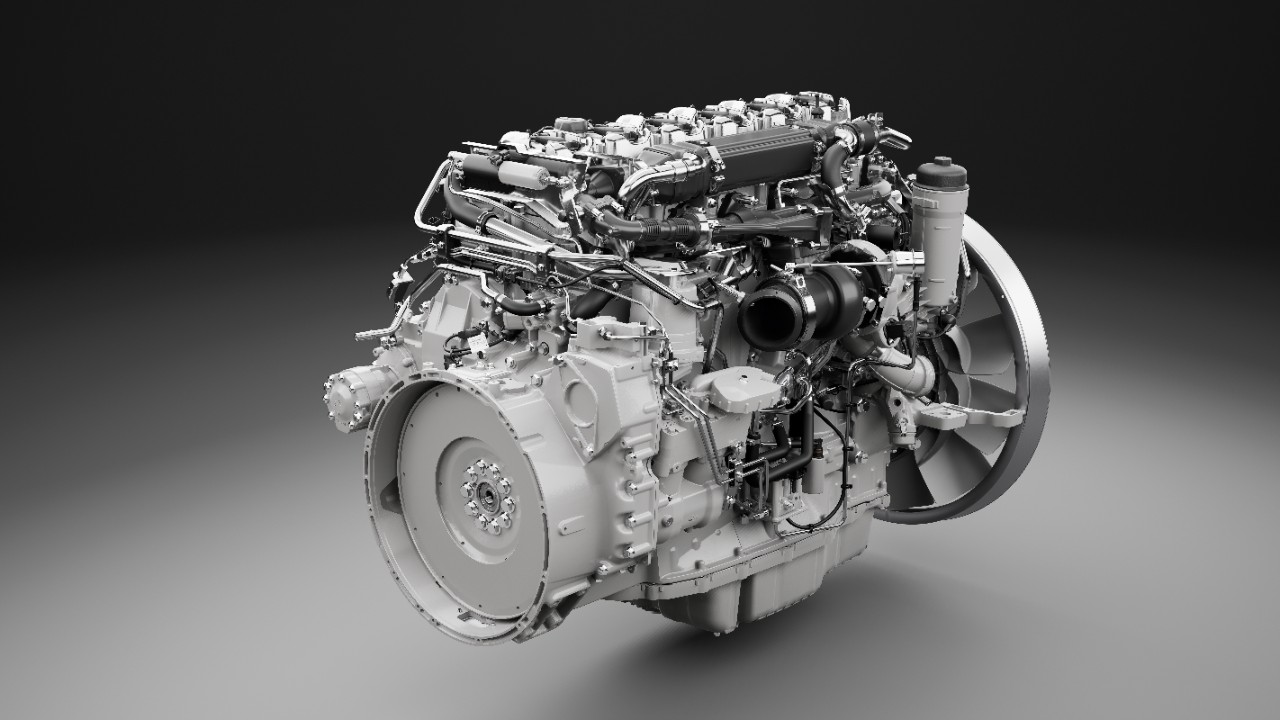
High Five: Scania’s new biogas engines have just got greener
8th December 2023
- Scania launches two new 13-litre biogas engines producing 420hp and 460hp, which can save up to 5% on fuel used on long-haul operations
- This is thanks to the use of the gearbox and axles derived from the latest generation Super diesel powertrain
Södertälje, Sweden, 7 December 2023: Scania has launched its latest generation of biogas engines, which offer a 5% fuel savings over its predecessors.
First teased at last year’s IAA show in Hanover, Germany, the new 13-litre biogas engines are available with either 420hp or 460hp, and utilise components from the latest generation Super diesel powertrain, to help it improve its fuel saving potential.
When the new engines are paired with the G25 gearboxes and axles, testing has proven that operators could see up to a 5% fuel saving on long-haul operations.
The engines are a refinement of the previous generation 13-litre gas units, with the power outputs increased and preparation to meet future legal demands.
Ola Henriksson, Senior Product Manager for Renewable Fuels at Scania Trucks, said: “Biomethane fuels are the solution for those customers who want to start
a decarbonisation journey without any delay.
“Our biogas engines cover a wide span of industries and applications. A 40-tonne tractor-and-trailer combination can achieve ranges of up to 1,800 km when specified with the biggest Bio-LNG tank solutions that we offer. Add the 460hp and the 2,300Nm engine and you have a perfect tool for European long-haul.
“Just as the Super engine benefits from the increased spread in the G25 gearbox, so do the biogas engines. When paired with the Scania Opticruise gearbox and the new axles, the biogas engines can operate very close to their ‘sweet spot’ most of the time. Put together, it results in 5% fuel savings from this powertrain.”
Scania sees biogas vehicles playing a crucial role in helping the industry decarbonise and switch away from diesel, with the ability to reduce CO2-emissions by up to 90% from a well-to-wheel perspective.
The gas infrastructure across Europe and in the UK is also rapidly expanding and becoming more mature, thanks to increasing demand.
Ola Henriksson, said: “With the CO2 reductions, the driveability and the ranges we offer now, I’m convinced that more customers will recognise what a great solution this is.
“There are so many obvious pros and virtually no cons at all. And the driver can also enjoy a significantly lower noise level.”
For further information, please contact:
Hemal Mistry,
Head of Communications, Scania UK
Phone: 07716 090387
E-mail: hemal.mistry@scania.com
Editor notes
Engine data for the new biogas engines
| OC13 103 420 hp | OC13 104 460 hp |
Type | Inline | |
Displacement | 12.7 litres | |
Firing order | 1-5-3-6-2-4 | |
Cylinders | 6 | |
Valves per cylinder | 4 | |
Bore x stroke | 130 x 160 mm | |
Compression | 12.6:1 | |
Fuel injection | Bosch + CEM1 | |
Oil capacity | 43 litres | |
Emission control | Scania EGR and three-way catalytic converter | |
Max. output | 420 (311 kW) @ 1900 /min | 460 (340 kW) @ 1900 r/min |
Max. torque | 2100 Nm @ 1000-1300 r/min | 2300 Nm @ 1000-1300 r/min |